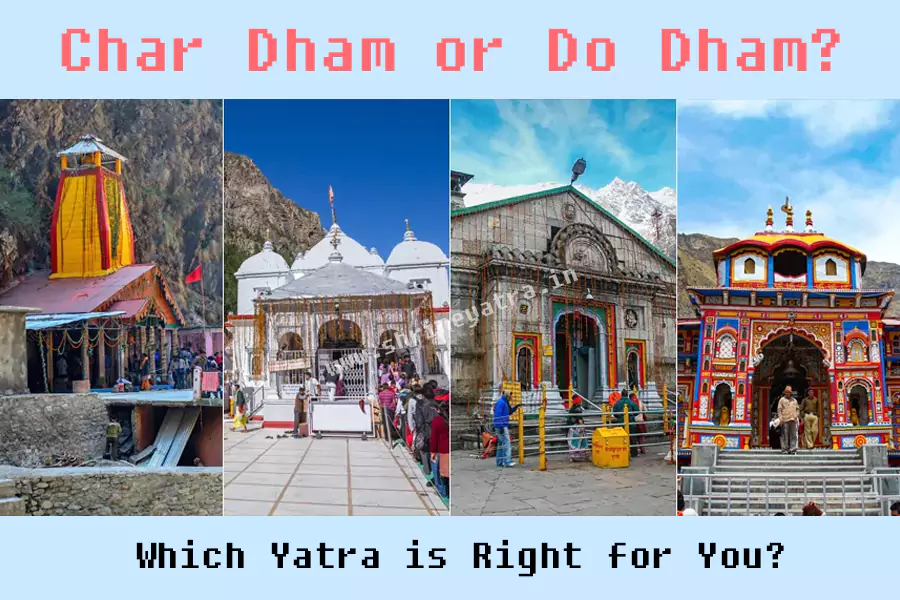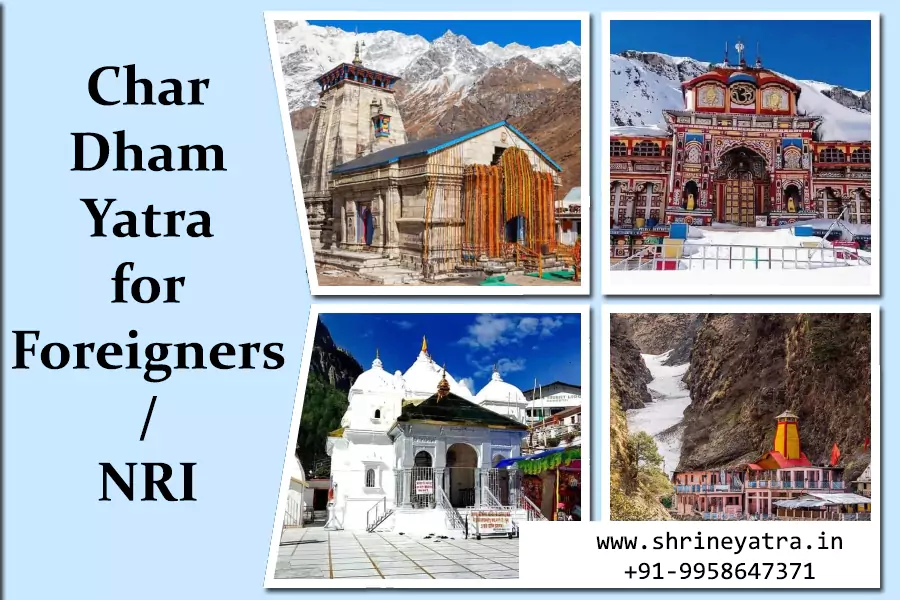Planning a trip to the holy city? You’re in for a divine treat! There are many places to visit in Haridwar that offer a perfect blend of spirituality, serenity, and culture. Located on the banks of the sacred Ganga River in Uttarakhand, Haridwar is more than just a spiritual hotspot—it’s a vibrant mix of history, devotion, nature, and experiences that stay with you forever. Whether you’re here for peace, adventure, or divine blessings, this guide will help you explore everything this timeless city has to offer.
Uncover sacred vibes on our Char Dham Yatra Package for a short yet fulfilling journey.
Brief History of Haridwar
Haridwar is one of the seven holiest places in Hinduism. Its name means “Gateway to God”—and that’s exactly how it feels when you step foot here. Mythology says this is one of the four places where drops of Amrit (elixir of immortality) fell during the churning of the ocean. It’s also the site of the grand Kumbh Mela, held once every 12 years.
Top Places to Visit in Haridwar
Let’s dive into the must-visit spots that make Haridwar unforgettable.
Har Ki Pauri
This is the soul of Haridwar. Watching the Ganga Aarti in the evening, with flames dancing and chants echoing in the air, is truly magical. The ghat is considered to be the precise spot where the Ganga leaves the mountains and enters the plains.
Chandi Devi Temple
Perched on the Neel Parvat, you can reach this temple either by trekking or using the ropeway. It’s one of the Siddh Peethas and offers divine energy with panoramic views.
Mansa Devi Temple
Dedicated to the wish-fulfilling goddess Mansa Devi, this temple is situated atop Bilwa Parvat. The cable car ride is fun, and the views from the top are breathtaking.
Maya Devi Temple
This ancient temple is one of the Shakti Peethas and is believed to be the place where Goddess Sati’s heart and navel fell. It’s serene and spiritually significant.
Bharat Mata Mandir
A multi-storeyed temple where each floor is dedicated to different legends, deities, and freedom fighters. It’s a symbolic representation of Mother India.
Daksha Mahadev Temple
Linked to the tale of Sati and Shiva, this temple holds immense mythological importance and is especially vibrant during the Shivratri festival.
Pawan Dham
Known for its intricate glasswork and finely decorated idols, Pawan Dham is not just a temple but a visual delight.
Sapt Rishi Ashram and Sapt Sarovar
Located on the riverbank, it’s said that seven sages meditated here. A peaceful place perfect for quiet moments and reflection.
Patanjali Yogpeeth
One of the largest yoga institutes in the world, it promotes yoga, Ayurveda, and natural healing. If wellness is your goal, this is the place to be.
Nearby Attractions from Haridwar
Rishikesh
Just 20 km away, Rishikesh is a spiritual cousin of Haridwar. It’s also known for river rafting, yoga retreats, and the iconic Lakshman Jhula.
Rajaji National Park
A must-visit for nature lovers. Take a jungle safari and spot elephants, leopards, deer, and exotic birds in their natural habitat.
Neelkanth Mahadev Temple
Surrounded by dense forests, this temple is about 32 km from Haridwar and is one of the most sacred shrines of Lord Shiva.
Best Time to Visit Haridwar
Haridwar can be visited year-round, but here’s a breakdown:
-
Winter (October to February): Cool and pleasant—great for sightseeing.
-
Summer (March to June): Hot but manageable.
-
Monsoon (July to September): Lush greenery, though there might be travel disruptions.
Wondering when to plan your trip? Discover the Best Time to Visit Haridwar for a perfect spiritual getaway.
Festivals to experience:
-
Kumbh Mela
-
Kanwar Yatra
-
Diwali & Ganga Dussehra
How to Reach Haridwar
By Air
The nearest airport is Jolly Grant Airport in Dehradun (approx. 35 km). Taxis and buses are easily available.
By Train
Haridwar Railway Station is well-connected to major Indian cities like Delhi, Mumbai, and Kolkata.
By Road
You can drive or take buses from Delhi, Dehradun, and nearby hill stations. The roads are in good condition, and scenic too!
Where to Stay in Haridwar
From budget guesthouses to luxurious hotels and spiritual ashrams, Haridwar offers something for everyone.
-
Luxury: Ganga Lahari, Radisson Blu
-
Mid-range: Hotel Alpana, La Casa
-
Budget: Various Dharamshalas and hostels
What to Eat in Haridwar
-
Chotiwala Restaurant – A landmark for North Indian thalis
-
Aloo puri near Har Ki Pauri – Absolute street-food delight
-
Kachori sabzi, Jalebi, and Lassi – Perfect for breakfast or evening snacks
Travel Tips for Haridwar
-
Dress modestly, especially while visiting temples
-
Don’t litter near the Ganga
-
Bargain in the local markets, but respectfully
-
Avoid non-veg food and alcohol within the city limits
-
Keep your belongings safe during crowded events like Ganga Aarti
Shopping in Haridwar
Looking for souvenirs? Try these:
-
Rudraksha beads and Ganga jal bottles
-
Ayurvedic products from Patanjali
-
Spiritual books, brass idols, and incense sticks
Conclusion
There’s no doubt that Haridwar is one of India’s most spiritually enriching places. From soul-stirring aartis at Har Ki Pauri to serene temples and nearby escapes like Rishikesh and Rajaji National Park, every moment here is deeply fulfilling. If you’re searching for the most soulful places to visit in Haridwar, this guide gives you all the details you need to make your journey truly unforgettable.
Plan your Char Dham trip wisely—check the Best Time to Visit Chardham Yatra before booking.
FAQs
Q1: Is Haridwar safe for solo travelers?
Yes, it’s generally safe, especially for women. Just follow usual precautions.
Q2: How many days are enough to explore Haridwar?
2–3 days are ideal to cover major attractions comfortably.
Q3: Can I do both Haridwar and Rishikesh in one trip?
Absolutely! They are just 20 km apart and easily connected.
Q4: Are there good options for vegetarian food in Haridwar?
Yes, the city is strictly vegetarian, and the food is delicious!
Q5: What should I wear while visiting temples in Haridwar?
Modest and comfortable clothes. Avoid sleeveless tops and shorts.











